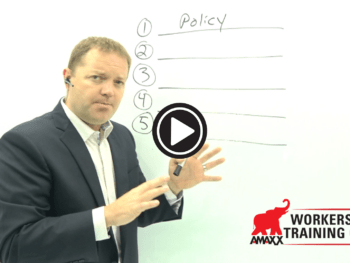
The debate over bundled program services vs. unbundled program services is often a matter of perspective. For readers wondering what we mean, bundled program services are when the self-insured employer gets all claim handling services from one service provider. Unbundled is when the self-insured employer gets claim handling services from multiple providers.
In addition to claims-adjusting services, there is an array of auxiliary services the self-insured employer will need. These include medical triage, physical therapy, nurse case management, medical bill review, pharmacy benefit manager, special investigations unit (SIU), defense attorneys, risk control/safety services, and data management services. In the bundled program, a single third-party administrator (TPA) will provide all claim handling services to the self-insured employer, while in the unbundled program, the self-insured employer will be dealing with several service providers besides the TPA providing the claims adjusting.
Click Link to Access Free PDF Download
When an account executive for an insurance broker’s office and an account executive for a large TPA (with all the various services available) talk to a self-insured employer’s risk manager, account executives will place the emphasis of their sales pitch on the convenience of having one TPA administer everything, the seamless coordination of all aspects of claims handling, and the economies of scale having the multifaceted TPA handle everything.
When an account executive of a small TPA delivers a sales presentation, emphasis is placed on the better price o be provided without all the large TPA overhead, along with the personalized attention their adjusters and other employees will provide.
Neither the large nor small TPA will mention leakage (the money you will spend unnecessarily) by having either the bundled program approach or the unbundled program approach. Both approaches have flaws and the account executives for both the bundled and unbundled programs will often not realize the leakage their company’s approach to claim services cost the self-insured employer.
Leakage in the bundled program often results from the fact that it is a bundled program. Without precise guidelines (which account executives definitely do not want), it is way too easy in the bundled program for an adjuster to assign a nurse case manager on a claim where the adjuster could make the same few phone calls to find out an employee’s medical status. It is also too easy for the adjuster to refer a claim to the SIU then to take necessary recorded statements from the employee, the employee’s supervisor, etc. When a self-insured employer is paying a nurse case manager, the pharmacy benefit manager and the SIU to make phone calls the adjuster should have made, you can have major unnecessary claim-handling expense leakage.
Another leakage source in the bundled programs is often service cost. If the in-house nurse case manager at a large TPA charges $10 more per hour for the same nurse case management services than the small independent provider of medical management services — that is leakage. All charges to the self-insured employer may be valid, but if the nurse case manager puts in 50 hours of work over the life of the claim, an extra $10 per hour amounts to $500 in leakage.
Leakage also occurs with unbundled programs. If a TPA has to contact an outside vendor for the claim handling services needed, any communication or follow-through delays can become leakage. For example, if a TPA adjuster has to wait on approval to employ a nurse case manager or an outside surveillance company, a two-day delay is two extra days of indemnity benefits. That may not sound like much, but if the same nurse case manager the adjuster hired recommends a change in medical care and the adjuster has to obtain his supervisor’s approval another day is lost. Again it does not sound like much, but the cumulative affect of delays in an unbundled program can bring substantial additional cost.
FREE DOWNLOAD: “5 Critical Metrics To Measure Workers’ Comp Success”
Another aspect of the unbundled program to avoid is delegating to the adjuster the responsibility of hiring other vendors . Other vendors in an unbundled program should be designated by the self-insured employer. If not, the adjuster hires his golfing buddy to do surveillance on the claimant with the questionable injury. Or, the adjuster may hire the defense attorney who has the best Christmas party, not the best defense attorney for your work comp claims. When the adjuster is also given the responsibility of reviewing and approving vendor service fees when the adjuster has chosen them herself, the adjuster could be more lenient, resulting in additional leakage through higher-than-necessary service bills.
Whether the self-insured employer uses a bundled services approach or unbundled services, it must remain the priority of the self-insured employer to closely scrutinize all service costs to be sure the services are being provided in the most cost-efficient manner and that claims leakage does not occur.
Author Rebecca Shafer, JD, President of Amaxx Risks Solutions, Inc. is a national expert in the field of workers compensation. She is a writer, speaker, and website publisher. Her expertise is working with employers to reduce workers compensation costs, and her clients include airlines, healthcare, printing, publishing, pharmaceuticals, retail, hospitality, and manufacturing. See www.LowerWC.com for more information. Contact: RShafer@ReduceYourWorkersComp.com.
Our WC Book: http://www.wcmanual.com
WORK COMP CALCULATOR: http://www.LowerWC.com/calculator.php
MODIFIED DUTY CALCULATOR: http://www.LowerWC.com/transitional-duty-cost-calculator.php
WC GROUP: http://www.linkedin.com/groups?homeNewMember=&gid=1922050/
SUBSCRIBE: Workers Comp Resource Center Newsletter
Do not use this information without independent verification. All state laws vary. You should consult with your insurance broker or agent about workers comp issues.
©2011 Amaxx Risk Solutions, Inc. All rights reserved under International Copyright Law. If you would like permission to reprint this material, contact Info@ReduceYourWorkersComp.com.
FREE DOWNLOAD: “5 Critical Metrics To Measure Workers’ Comp Success”








